For this exercise I chose the Walking Buddha as the model. I used a matt black background to create a good contrast with the images.
I again used the daylight lamp with the white background for the light tent covering the lamp shade (shade already white and a cool temperature lamp) as a softener. This works well as the lamp head is on a flexible stand which allows easy positioning. The blinds and curtains were drawn in the study with the door closed, so all light was from the daylight lamp.
1. Frontal Light
Lamp at camera height, pointing straight at Buddha
This full frontal light tends to flatten his features. His high cheeks and wide mouth can’t be distinguished easily.
2. Side Lighting
Lamp at camera height, pointing to the side of Buddha
This angle gives better relief and he’s definitely looking happier, but his left hand side is lost too much for my liking.
3. Side Rear Lighting
Lamp at camera height, pointing to the rear side of Buddha
He’s still got his smile, but the contrast between the light and dark sides is too much for me.
4. Back Lighting
Lamp at camera height, pointing to the rear of Buddha
As a silhouette it’s fine, but so much detail is missing from his image that it just doesn’t work for me.
5. High frontal lighting
Lamp pointing down at 45 Deg, straight at Buddha
This angle has produced lots of detail and form. But he still looks a little ‘flat’ around the eyes.
6. High Side Lighting
Lamp pointing down at 45 Deg, to the side of Buddha
He’s now getting more form without losing too much of his left hand side. His cheeks and mouth are really showing his smile here and there are contours around his eyes.
7. High Rear Side lighting
Lamp pointing down at 45 Deg, to the rear side of Buddha
This angle shows more depth – his sack is now more evident and he looks as though he’s moving from the light.
8. High Back lighting
Lamp pointing down at 45 Deg, to the rear of Buddha
This lighting position produces a lighter area to his front as well as giving him depth, but I feel it that there’s still not enough front lighting – may be a case for some fill light. The eye is distracted by the light on his fingers.
9. Overhead lighting
Lamp suspended directly over Buddha
This light is complimentary for his upper body, but his feet disappear in the shadows (I know just how he feels!)
10. Overhead Back lighting
Lamp suspended just behind Buddha
I like the texture exhibited in this image. He’s got a wonderful smile. There’s still too much light on his left hand, and detail lost around his feet, but the rest looks very good.
11. Overhead Front lighting
Lamp suspended just in front of Buddha
This lighting is a little too far forward. We’re seeing the front lighting better, but the top of his head and face are now becoming a little ‘flat’
I think the lighting that suits this subject best is No. 7 – ‘High Rear Side’. This gives more form while retaining the happiness of the figure – enough light to show his features and sufficient contrast to show the depth of the man, his goods and his clothing. An altogether happy state to be in!
I think that No. 8 could surpass No. 7 with the use of selective front fill.
This has been a good exercise to experiment with the positioning of the light. Obviously the different positions affect the way the model is portrayed and what aspects are exaggerated / repressed.
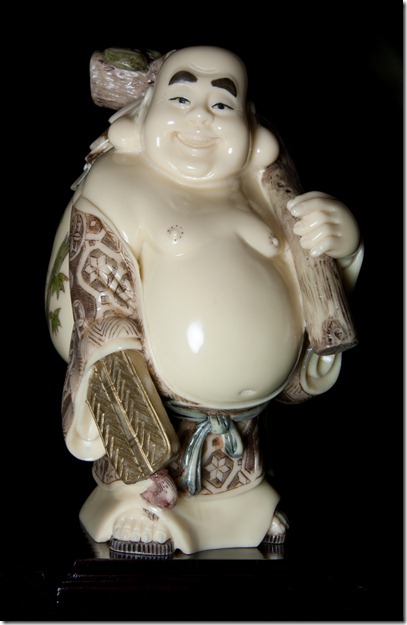

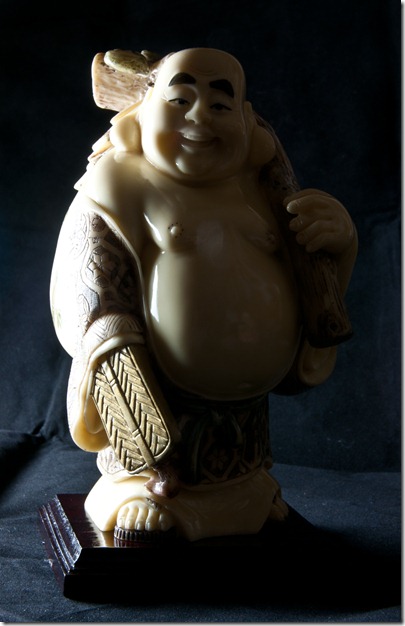
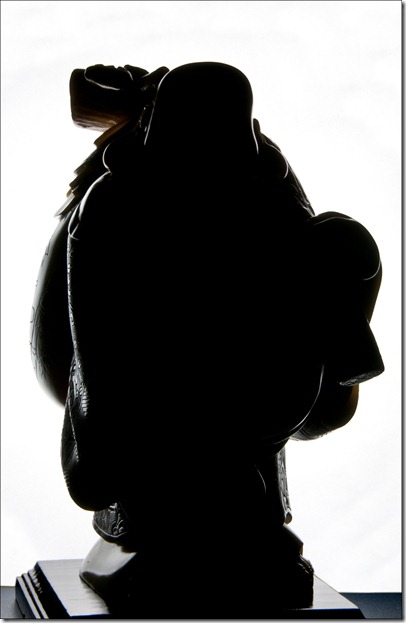
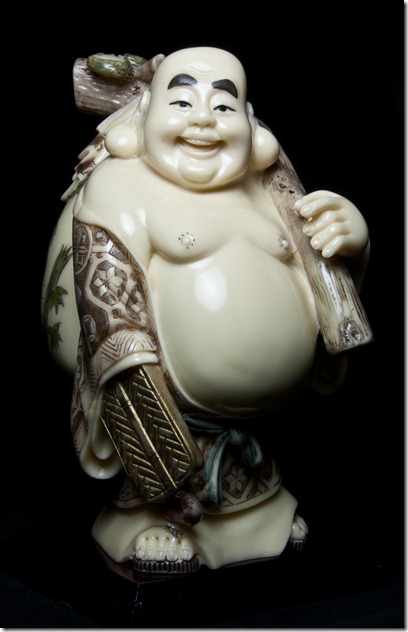
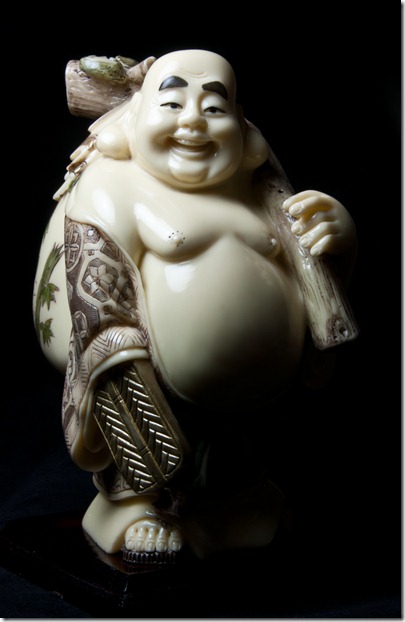
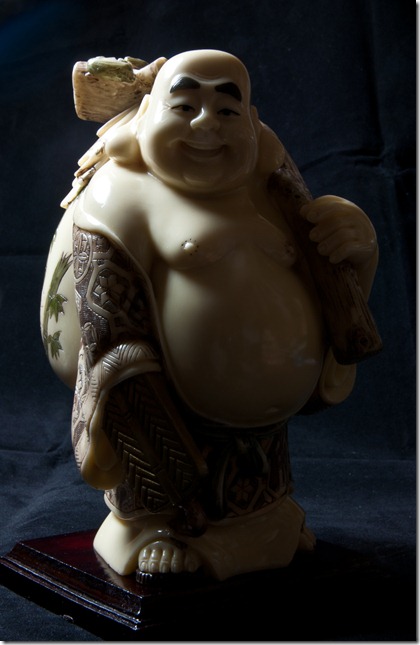
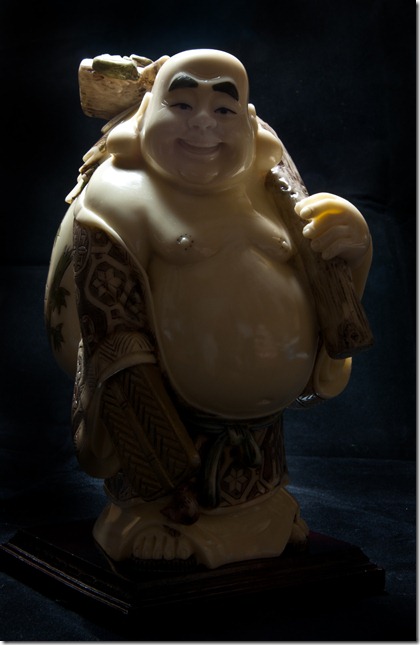
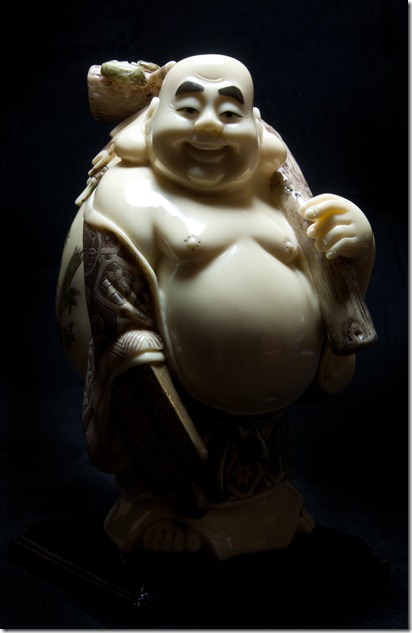
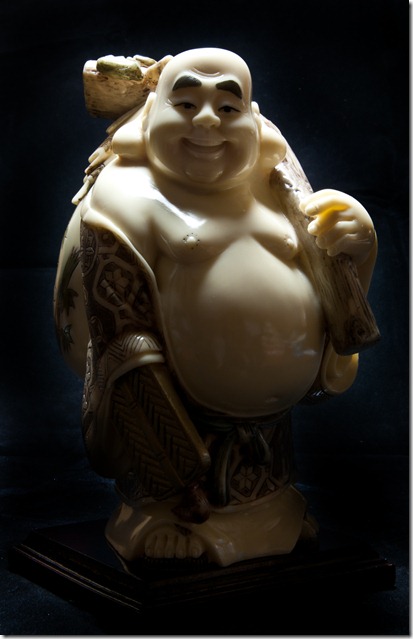
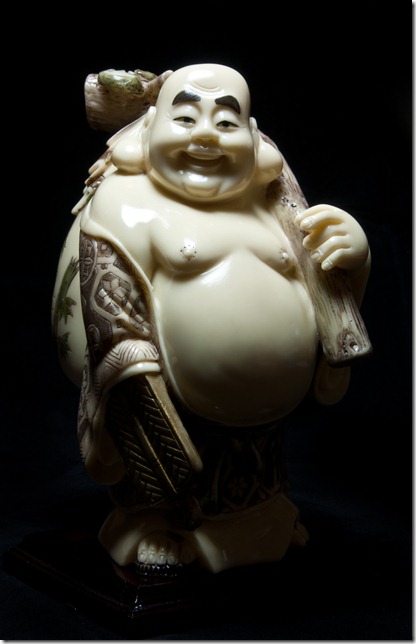
No comments:
Post a Comment